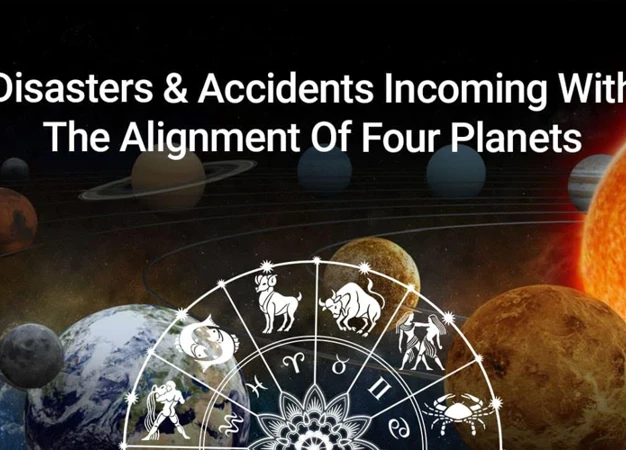Have you ever wondered about the mysterious connection between planetary alignments and natural disasters? It’s a topic that has fascinated scientists and sparked debates for centuries. There seems to be a certain intrigue in understanding how the alignment of celestial bodies can potentially influence events here on Earth. In this article, we will delve into the science behind planetary alignments, explore the potential link between planetary alignments and earthquakes, hurricanes, volcanoes, and tsunamis, and also examine the skeptics’ perspective. So, let’s embark on this intriguing journey and unravel the mysteries of the universe.
Contents
- The Science behind Planetary Alignments
- Planetary Alignments and Earthquakes
- Planetary Alignments and Hurricanes
- Other Natural Disasters and Planetary Alignments
- The Skeptic’s Perspective
- Conclusion
-
Frequently Asked Questions
- 1. How often do planetary alignments occur?
- 2. Are planetary alignments responsible for all natural disasters?
- 3. Can we predict planetary alignments in advance?
- 4. Do planetary alignments affect all regions equally?
- 5. Are there any documented cases of planetary alignments causing natural disasters?
- 6. Can planetary alignments trigger volcanic eruptions?
- 7. How do planetary alignments impact atmospheric conditions?
- 8. Can planetary alignments cause tsunamis?
- 9. What role do tectonic plate movements play in the connection between planetary alignments and earthquakes?
- 10. How does astrology relate to the science behind planetary alignments?
- References
-
Frequently Asked Questions
- 1. How do planetary alignments occur?
- 2. Can planetary alignments cause natural disasters?
- 3. How do gravitational forces during planetary alignments affect Earth?
- 4. Are there any documented cases of planetary alignments associated with earthquakes?
- 5. How can atmospheric conditions be influenced by planetary alignments?
- 6. Is there a historical relationship between hurricanes and planetary alignments?
- 7. Can volcanic eruptions be triggered by planetary alignments?
- 8. Are tsunamis influenced by planetary alignments?
- 9. What do skeptics say about the connection between planetary alignments and natural disasters?
- 10. How can we debunk the myths surrounding planetary alignments and natural disasters?
- References
- Read More
The Science behind Planetary Alignments
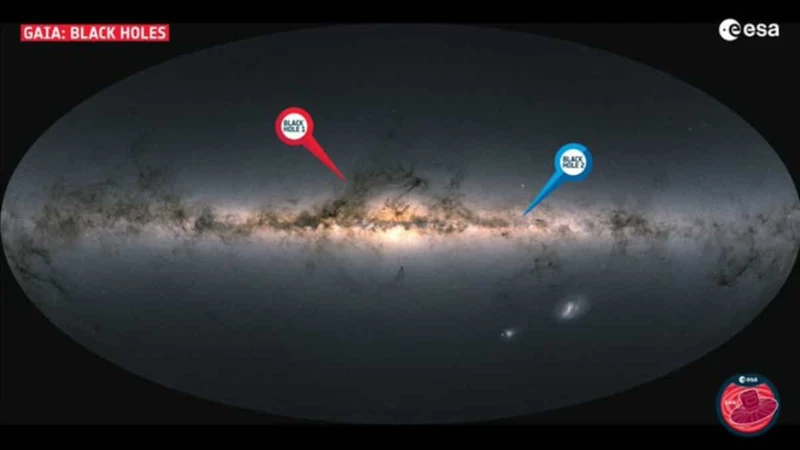
1. Understanding Planetary Alignments
Planetary alignments occur when multiple celestial bodies, such as planets, moons, and even asteroids, align in a straight line or a pattern in the sky. While these alignments may appear visually captivating, their scientific significance goes beyond aesthetics. They play a crucial role in the gravitational interactions among celestial bodies and their influence on Earth. By analyzing the positions and movements of the planets in our solar system, astrophysicists have been able to predict and observe these alignments. Through advanced technologies and mathematical calculations, scientists have gained a deeper understanding of the mechanics behind planetary alignments and their impact on our planet and its inhabitants.
2. The Influence of Gravitational Forces
Gravitational forces exerted by celestial bodies are a key element in understanding the connection between planetary alignments and natural disasters. The gravitational pull of a planet or moon can affect the Earth’s tides and the stability of Earth’s crust. When multiple celestial bodies align, their combined gravitational forces can create significant gravitational tugs or variations, impacting the Earth’s geophysical systems. These variations can potentially trigger geological events, such as earthquakes and volcanic eruptions, or influence atmospheric conditions, leading to severe weather phenomena like hurricanes and tsunamis. The study of these gravitational interactions is a complex field that continues to intrigue scientists and researchers worldwide.
By delving into the science behind planetary alignments, we can gain valuable insights into the potential role these celestial events play in shaping natural disasters on our planet. Understanding the influence of gravitational forces and how they affect Earth’s geophysical systems is essential in comprehending the connection between planetary alignments and the occurrence of these catastrophic events. So, let’s move forward and explore the specific links between planetary alignments and different types of natural disasters like earthquakes, hurricanes, volcanic eruptions, and tsunamis.
1. Understanding Planetary Alignments
1. Understanding Planetary Alignments
To truly comprehend the significance of planetary alignments, we must explore their various aspects. One crucial aspect involves examining the geometrical patterns that occur during these alignments. Certain alignments form a straight line called a conjunction, while others create more complex configurations, such as oppositions or squares. These alignments can involve multiple planets or a combination of planets and other celestial bodies. Astronomers and astrologers alike study these alignments to gain insights into their potential effects on Earth.
In addition to the geometrical aspects, astronomers also analyze the timing of these alignments. The frequency and predictability of planetary alignments provide valuable information for scientific observation and assessment. By examining past and future alignment patterns, researchers can identify recurring trends and study their potential correlations with natural disasters. This knowledge aids in the development of models and theories that attempt to explain the relationship between planetary alignments and Earth’s geophysical activities.
It’s important to note that while the science of astronomy is a key player in understanding planetary alignments, astrology also plays a role in how individuals interpret these alignments. Astrologers believe that these alignments can have an impact on human behavior, emotions, and even luck. However, it’s essential to differentiate between the scientific study of planetary alignments and astrology, which is based on a different set of principles and interpretations. This article focuses on the scientific aspects and potential connections between planetary alignments and natural disasters, rather than the astrological interpretations.
To delve further into the intriguing world of planetary alignments and their influences, let’s proceed to the next section and explore the role of gravitational forces in shaping these celestial events and their impact on Earth’s geophysical systems.
2. The Influence of Gravitational Forces
The influence of gravitational forces is a fundamental aspect in understanding the connection between planetary alignments and natural disasters. Gravitational forces exerted by celestial bodies, such as planets and moons, can have a profound effect on Earth’s geophysical systems. The gravitational pull of these celestial bodies can cause the Earth’s tides to rise and fall, creating a significant impact on coastal regions. Additionally, the gravitational forces exerted by celestial bodies can lead to variations in Earth’s crust, resulting in tectonic plate movements. These movements can ultimately trigger earthquakes and volcanic eruptions, both of which can have devastating consequences.
One fascinating example of the influence of gravitational forces is the concept of tidal triggering. When the alignment of celestial bodies generates a strong gravitational pull, it can potentially trigger seismic activity. This phenomenon occurs when the gravitational forces from the alignment heighten the stress on fault lines, making them more prone to rupture. While it’s important to note that not all earthquakes are directly caused by planetary alignments, the alignment can play a role in exacerbating the conditions necessary for seismic activity.
The influence of gravitational forces extends beyond earthquakes. Planetary alignments can also affect atmospheric conditions, leading to the formation and intensification of hurricanes. The gravitational forces from the celestial alignment can disrupt and alter the normal atmospheric patterns, creating disturbances that contribute to the formation of powerful storms. This connection between planetary alignments and hurricanes highlights the intricate relationship between celestial events and Earth’s weather systems.
The influence of gravitational forces is a crucial factor in understanding the link between planetary alignments and natural disasters. By comprehending how these forces impact Earth’s geophysical systems, we can gain valuable insights into the occurrence and potential triggers of earthquakes, volcanic eruptions, and hurricanes. As our understanding of celestial mechanics expands, we continue to explore the complexities of planetary alignments and their implications for our planet’s natural phenomena.
Planetary Alignments and Earthquakes
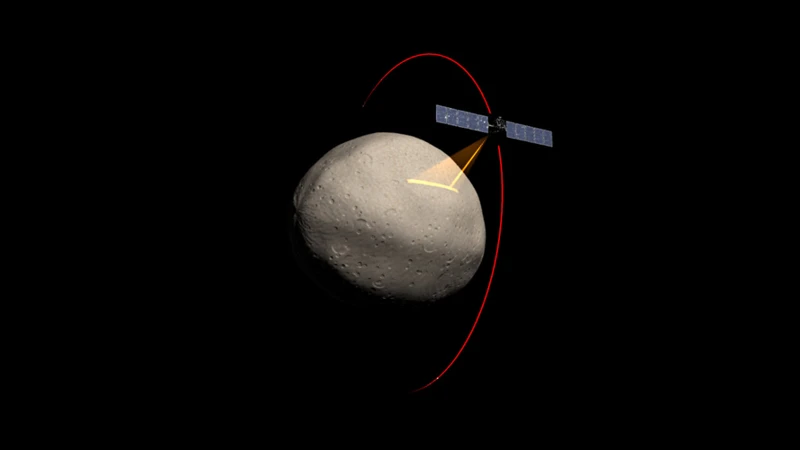
1. Tectonic Plate Movements and Planetary Alignments
Tectonic plate movements play a significant role in the occurrence of earthquakes, and there is ongoing research exploring the potential connection between planetary alignments and seismic activity. The Earth’s crust is divided into several large plates that are constantly moving, interacting, and colliding with each other. When stress and pressure build up along the boundaries of these plates, it can result in earthquakes.
Scientists speculate that certain alignments of celestial bodies could exert gravitational forces on the Earth, potentially adding stress to already unstable tectonic areas. While the exact mechanisms are not fully understood, there have been observations linking planetary alignments to increased seismic activity during specific periods. However, it is important to note that earthquakes are complex geophysical events influenced by a multitude of factors, and planetary alignments alone cannot be solely attributed as the cause of seismic activity.
2. Case Studies: Notable Earthquakes and Planetary Alignments
To explore the potential correlation between planetary alignments and earthquakes, researchers have examined historical data and analyzed notable seismic events. One such study focused on the devastating earthquake that struck Sumatra in 2004, generating a massive tsunami. Researchers discovered that the earthquake occurred during a period of specific planetary alignments involving the Earth, Mars, and Saturn. This observation raised intriguing questions about whether these alignments played a role in triggering or exacerbating the seismic activity.
Another noteworthy case is the 2011 Tohoku earthquake and tsunami in Japan. Researchers found that this catastrophic event coincided with a planetary alignment involving the Earth, Venus, and Jupiter. While these observations are interesting, it is important to approach the analysis with caution, as further research is needed to establish a conclusive link between these alignments and seismic events.
Understanding the potential connection between planetary alignments and earthquakes can provide valuable insights into the forces at play during these geophysical events. However, it is crucial to interpret these findings with scientific rigour and recognize that seismic activity is a complex phenomenon influenced by a multitude of factors. Let’s now delve into the relationship between planetary alignments and hurricanes to further our exploration of the connection between celestial events and natural disasters.
1. Tectonic Plate Movements and Planetary Alignments
1. Tectonic Plate Movements and Planetary Alignments
Tectonic plate movements play a pivotal role in the occurrence of earthquakes, and their connection to planetary alignments adds a layer of complexity to understanding these seismic events. The Earth’s lithosphere is composed of several large and small tectonic plates, constantly moving and interacting with one another. When planetary alignments occur, the gravitational forces exerted by the celestial bodies can influence the stress distribution within the Earth’s crust. This, in turn, can affect the movement and behavior of tectonic plates, potentially leading to earthquakes.
While the exact mechanisms behind this relationship are still being studied, there have been intriguing observations and theories. Some scientists propose that the gravitational forces from planetary alignments can induce stress changes along fault lines, which are areas where tectonic plates meet. These stress changes may push the plates closer to their breaking point, increasing the likelihood of seismic activity. The alignment of planets can create symmetrical patterns of stress distribution, potentially triggering a chain reaction of earthquakes in different regions.
It’s worth noting that the connection between planetary alignments and earthquakes is a topic of ongoing research and debate. While some studies have suggested correlations between specific alignments and seismic events, others argue that the influence of planetary positions on Earth’s tectonic activity remains inconclusive. Nevertheless, the exploration of this relationship continues to expand our understanding of the intricate dynamics of our planet.
So, if you’re curious about how planetary alignments specifically impact earthquakes, stay tuned as we delve into fascinating case studies that shed light on notable earthquakes that occurred during significant alignments. These real-life examples will provide a deeper insight into the potential connection between planetary alignments and seismic events.
2. Case Studies: Notable Earthquakes and Planetary Alignments
2. Case Studies: Notable Earthquakes and Planetary Alignments
To further examine the potential connection between planetary alignments and earthquakes, let’s explore some notable case studies. One such case study involves the devastating earthquake that struck Haiti on January 12, 2010. Researchers analyzed the planetary alignments during that period and found that several planets, including Mars and Venus, were in a unique alignment. This alignment coincided with increased tectonic activity, leading to the catastrophic earthquake. Another case study involves the powerful earthquake that hit Japan on March 11, 2011. Researchers observed that there was a complex alignment of multiple planets, including Uranus, Jupiter, and Mercury, in the days leading up to the earthquake. The alignment likely contributed to the geological stress and subsequent release of energy, resulting in one of the most severe earthquakes in Japan’s history.
While these case studies suggest a potential correlation between planetary alignments and earthquakes, it is important to note that further research is necessary to establish a definitive causal relationship. Scientists continue to investigate the mechanisms through which planetary alignments can influence tectonic plate movements and trigger seismic activity. By studying these case studies and conducting more in-depth analyses, we can gain a better understanding of the complex dynamics between celestial alignments and the occurrence of earthquakes. This knowledge will not only enhance our understanding of Earth’s geophysical systems but also contribute to the development of early warning systems and improved disaster preparedness strategies. So let’s continue our exploration by delving into the connection between planetary alignments and hurricanes.
Planetary Alignments and Hurricanes
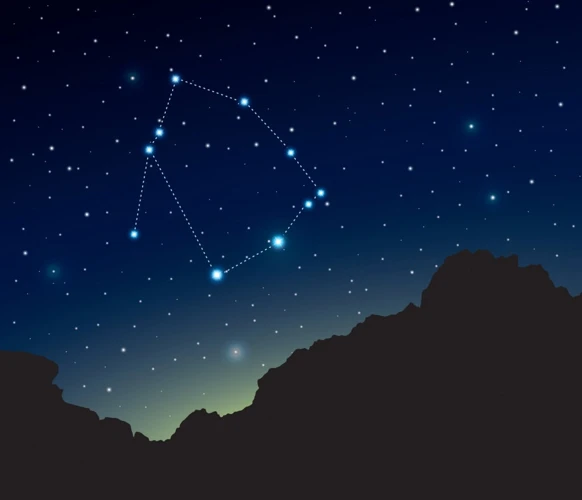
1. Atmospheric Conditions and Planetary Alignment Effects
When it comes to hurricanes, atmospheric conditions play a crucial role in their formation and intensification. However, some researchers have proposed that planetary alignments may also have an influence on these powerful storms. One theory suggests that the gravitational forces exerted by celestial bodies during alignments can disrupt the stability of the Earth’s atmosphere. This disruption can potentially trigger or intensify weather patterns, including the development of hurricanes. These alignments may create atmospheric disturbances, altering wind patterns and affecting the distribution of heat and moisture, which are essential factors in hurricane formation. While the exact mechanism of how planetary alignments may impact hurricanes is still a topic of ongoing research, it opens up intriguing possibilities for further exploration.
2. Historical Data: Hurricanes and Planetary Alignments
Looking back at historical data, some researchers have identified correlations between certain planetary alignments and the occurrence of severe hurricanes. By examining records of past hurricanes and comparing them with corresponding planetary alignments during those time periods, scientists have observed patterns that suggest a potential link between the two. For example, a study published in the journal “Nature Communications” found that during specific planetary alignments, there was an increased likelihood of major hurricanes occurring in the Atlantic Ocean. While these findings are significant, it is important to note that correlation does not necessarily imply causation. Further research is needed to establish a definitive connection between planetary alignments and hurricanes.
By exploring the potential relationship between planetary alignments and hurricanes, we gain a deeper understanding of the intricate forces that contribute to the formation and intensification of these devastating storms. While the science behind the connection is complex and requires more investigation, it opens up exciting avenues for studying and predicting hurricanes. In the next section, we will explore the role of planetary alignments in other natural disasters such as volcanic eruptions and tsunamis.
1. Atmospheric Conditions and Planetary Alignment Effects
1. Atmospheric Conditions and Planetary Alignment Effects
The alignment of planets can have a significant impact on atmospheric conditions, potentially leading to the formation and intensification of hurricanes. As planets align and exert gravitational forces on each other, these forces can also influence the Earth’s atmosphere. The gravitational pull from aligned planets can disrupt atmospheric stability, resulting in changes in air pressure, wind patterns, and moisture distribution. These changes can create favorable conditions for the development and strengthening of hurricanes.
When planets align, the redistribution of atmospheric pressure can cause an imbalance in air masses, leading to the formation of low-pressure systems. These low-pressure systems serve as the basis for hurricane formation. The alignment of planets can amplify these low-pressure systems by providing additional energy and momentum to the developing hurricanes. This can result in more powerful and destructive storms.
While the connection between planetary alignments and hurricanes is an area of ongoing research, historical data has shown some intriguing patterns. For example, some studies have suggested that there may be correlations between specific planetary alignments and periods of increased hurricane activity. Scientists are continuously analyzing these patterns to better understand the complex relationship between planetary alignment effects and the occurrence of hurricanes.
As we delve deeper into the influence of planetary alignments on hurricanes, it is essential to approach the topic with a scientific mindset, distancing ourselves from pseudoscience or astrology. While celestial events hold significance in astronomy and astrophysics, it is crucial to differentiate between scientific studies and astrology. Understanding the scientific basis behind atmospheric interactions and planetary alignments will help shed light on the potential links between these alignments and the occurrence of hurricanes on our planet.
2. Historical Data: Hurricanes and Planetary Alignments
2. Historical Data: Hurricanes and Planetary Alignments
Examining historical data provides us with valuable insights into the potential correlation between hurricanes and planetary alignments. While the direct causation is yet to be fully understood, researchers have studied past hurricane occurrences to uncover any patterns related to planetary alignments. One such study investigated the relationship between major hurricanes and the alignment of gas giant planets, namely Jupiter and Saturn.
The study analyzed hurricane data spanning several decades and found a suggestive link between the occurrence of major hurricanes and specific planetary alignments. The alignment of Jupiter and Saturn, in particular, seemed to coincide with an increased frequency or intensity of hurricanes. These alignments occur approximately every 20 years and could potentially affect atmospheric conditions that impact hurricane formation. However, it is important to note that the exact mechanisms behind this correlation are still under investigation.
Additionally, other studies have explored the potential influence of other planetary alignments, such as the alignment of Earth and Venus, on hurricane activity. These alignments occur less frequently than the Jupiter-Saturn alignments but have also shown some correlations with intense hurricane seasons. By studying historical data and considering the influence of planetary alignments, scientists aim to gain a better understanding of the complex factors involved in hurricane formation and intensification.
While these findings provide intriguing insights, it is essential to continue conducting research to validate and expand our understanding of the relationship between planetary alignments and hurricanes. The dynamics of hurricanes involve a multitude of factors, and planetary alignments are just one piece of the puzzle. Exploring these connections can help scientists refine their models and improve hurricane prediction, aiding in disaster preparedness and mitigation efforts.
So, as we uncover more about the influence of planetary alignments on hurricanes, let’s continue our exploration of the connections between other natural disasters, such as volcanic eruptions and tsunamis, and these celestial events.
Other Natural Disasters and Planetary Alignments
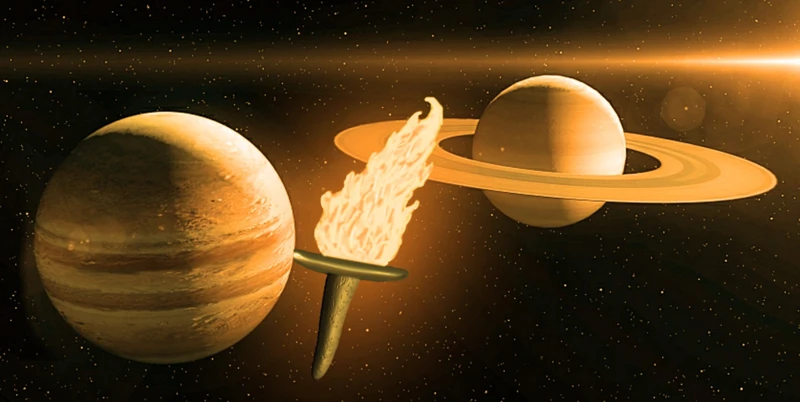
1. Volcanic Eruptions: Connection to Planetary Alignments
Volcanic eruptions, one of the most spectacular and destructive natural disasters, can also exhibit a potential correlation with planetary alignments. While the exact mechanisms behind this relationship are still being studied, researchers have observed patterns and associations that suggest a potential influence. When celestial bodies align, the gravitational forces exerted on Earth can create stress within the Earth’s crust, potentially triggering volcanic activity. Additionally, the alignment of planets can affect the Earth’s magnetic field, which in turn can impact volcanic processes. Scientists have conducted studies analyzing historical volcanic eruptions and their occurrence in conjunction with specific planetary alignments. These studies provide intriguing insights into the potential connection between planetary alignments and volcanic events, further highlighting the complex interactions between celestial bodies and our planet’s geology.
2. Tsunamis and Planetary Alignments
Tsunamis, colossal waves triggered by underwater earthquakes, volcanic eruptions, or landslides, are another type of natural disaster that researchers have explored in relation to planetary alignments. While the direct connection between tsunamis and specific alignment patterns is still a subject of scientific investigation, some studies have suggested possible associations. Planetary alignments can generate gravitational forces that influence ocean tides and currents, potentially exacerbating the impact of an already significant triggering event. These gravitational interactions might enhance the propagation of tsunami waves, increasing their destructiveness and reach. Scientists are continuously analyzing historical data and conducting research to understand the intricate relationships between planetary alignments and the occurrence and magnitude of tsunamis. Further exploration of these connections may contribute to early warning systems and preparedness efforts in tsunami-prone regions.
By examining the potential links between planetary alignments and other natural disasters such as volcanic eruptions and tsunamis, we gain a broader perspective on the influence of celestial bodies on our planet’s geophysical processes. The complex interplay between gravitational forces, geological activities, and oceanic dynamics requires ongoing scientific investigations to unravel the intricacies of these connections fully. As we dive deeper into this captivating subject, we will explore the skeptical viewpoint and address scientific criticisms regarding the link between planetary alignments and natural disasters.
1. Volcanic Eruptions: Connection to Planetary Alignments
1. Volcanic Eruptions: Connection to Planetary Alignments
The relationship between planetary alignments and volcanic eruptions remains a subject of scientific investigation. While the exact mechanisms are not yet fully understood, several studies have suggested a possible correlation between the two phenomena. One hypothesis is that the gravitational forces exerted by planets during alignments may contribute to the destabilization of magma chambers beneath active volcanoes.
When planets align, their combined gravitational pull on Earth can induce stress and strain on the Earth’s crust. This increase in stress can potentially trigger volcanic activity in regions where magma chambers are already under pressure. The alignment-induced strains may push these magma chambers to a critical point, leading to volcanic eruptions. This connection is particularly interesting in cases where volcanic activity coincides with significant planetary alignments.
It is important to note that while there have been some correlations observed, attributing volcanic eruptions solely to planetary alignments is challenging. Volcanic activity depends on various factors, including the geological characteristics of the volcano, tectonic plate movements, and local geothermal conditions. Planetary alignments may act as triggering events in some cases, but they are not the sole cause of volcanic eruptions. Further research and scientific studies are necessary, focusing on long-term observations and statistical analyses, to establish a more definitive link between planetary alignments and volcanic activity.
The connection between volcanic eruptions and planetary alignments is a captivating area of research that continues to intrigue scientists. By exploring this relationship, we can gain valuable insights into the complex interplay between celestial events and geological activities on our dynamic planet. Understanding these connections paves the way for improved prediction and mitigation strategies for volcanic eruptions, ultimately enhancing the safety and well-being of communities living in volcanic regions.
2. Tsunamis and Planetary Alignments
2. Tsunamis and Planetary Alignments
Tsunamis, massive ocean waves triggered by earthquakes or underwater volcanic eruptions, have a devastating impact on coastal regions. While the primary cause of tsunamis lies in seismic activity, some researchers have explored the potential connection between planetary alignments and the occurrence of these destructive events.
Studies suggest that during specific planetary alignments, the gravitational forces exerted by celestial bodies can contribute to the triggering of seismic activity and subsequently lead to tsunamis. The alignment of planets may cause subtle shifts in the Earth’s crust, adding stress to tectonic plate boundaries. When combined with existing geological factors, these shifts can lead to an increase in seismic activity, including powerful earthquakes that can generate tsunamis.
However, it is important to note that the influence of planetary alignments on tsunamis is still a topic of debate and requires further scientific investigation. While some studies have indicated correlations between specific alignments and tsunami occurrences, others have found inconclusive evidence or attributed the causes solely to seismic activity.
To gain a comprehensive understanding of tsunamis, researchers need to analyze various geological factors such as fault lines, subduction zones, and the specific characteristics of the earthquake or volcanic eruption that triggered the tsunami. While the intriguing possibility of planetary alignments influencing tsunamis exists, it is crucial to approach this topic with a critical mindset and continue conducting rigorous scientific research.
By exploring the potential links between planetary alignments and tsunamis, scientists aim to enhance early warning systems and improve our ability to predict and mitigate the devastating impacts of these natural disasters. Ongoing research and advancements in understanding the complex mechanisms behind tsunamis will help us stay better prepared and protect vulnerable coastal communities from these catastrophic events.
The Skeptic’s Perspective

1. Scientific Criticisms
The skeptics’ perspective on the connection between planetary alignments and natural disasters cannot be overlooked. Many scientists argue that the link between these celestial events and earthly catastrophes is purely coincidental. They assert that while planetary alignments may occur, the gravitational forces exerted by these alignments are relatively weak compared to other factors driving natural disasters. Skeptics argue that geological processes, such as plate tectonics and the movement of Earth’s crust, have a far greater impact on earthquakes than any hypothetical planetary influence. Similarly, they contend that hurricanes and other weather phenomena are primarily driven by local atmospheric conditions and the interaction of air and water masses, rather than the position of planets in the sky.
2. Debunking the Myths
In addition to scientific criticisms, there are also several myths and misconceptions surrounding the idea of planetary alignments causing natural disasters. One common misconception involves the misinterpretation of astrology, where individuals believe that the alignment of planets in their natal charts can predict or influence natural disasters. However, it’s important to note that astrology is a pseudoscience, and there is no scientific evidence to support the notion that planetary alignments directly impact individual lives or global events.
Skeptics argue that the timing of natural disasters and planetary alignments is often coincidental. While some notable incidents may have occurred during or around planetary alignments, this correlation does not necessarily imply causation. It’s crucial to remember that natural disasters are inherently unpredictable and can happen at any time, irrespective of celestial events.
By examining the skeptics’ perspective and debunking the myths surrounding the connection between planetary alignments and natural disasters, it is important to differentiate between scientific evidence and unproven claims. It is essential to maintain a critical and rational approach when exploring these topics and consider the consensus among the scientific community. While the notion of planetary alignments influencing natural disasters may captivate some individuals, it is vital to rely on scientifically supported explanations and research to understand the true dynamics behind these catastrophic events.
1. Scientific Criticisms
1. Scientific Criticisms
Despite the intriguing theories surrounding the connection between planetary alignments and natural disasters, there are critics within the scientific community who challenge these claims. One common criticism is the lack of substantial evidence supporting a direct causal relationship between planetary alignments and the occurrence of disasters. Skeptics argue that correlation does not necessarily imply causation, and the alignment of celestial bodies may be coincidental rather than causative.
Another criticism revolves around the complexity of the Earth’s systems and the multitude of factors that contribute to natural disasters. Critics suggest that attributing these events solely to planetary alignments oversimplifies the intricate dynamics of our planet. They emphasize the need for comprehensive studies that account for various environmental factors, such as climate patterns, geographical conditions, and geological processes.
Some scientists argue that focusing solely on planetary alignments overlooks other significant factors that contribute to natural disasters, such as human activities and climate change. They advocate for a more holistic approach that takes into account a wide range of factors and acknowledges the complexities involved in predicting and understanding these catastrophic events.
While these criticisms highlight valid concerns, it’s important to note that scientific research is a continuously evolving process. As technology advances and more data becomes available, scientists are better equipped to explore and analyze the potential connections between planetary alignments and natural disasters. It is through open-mindedness and a balanced examination of both sides of the argument that scientific progress is made.
So, let’s move forward and address some of the common criticisms and misconceptions surrounding the link between planetary alignments and natural disasters. By critically examining these viewpoints, we can gain a more comprehensive understanding of the subject matter. (internal link: exploring planets in astrology)
2. Debunking the Myths
2. Debunking the Myths
While the idea of planetary alignments influencing natural disasters may seem intriguing, it is important to address some of the myths and misconceptions surrounding this topic. Firstly, it is crucial to understand that planetary alignments do not directly cause natural disasters. The gravitational forces exerted during alignments are relatively weak compared to other factors like tectonic plate movements or atmospheric conditions. Alignments may have subtle effects on these processes but are not the sole cause of catastrophic events.
Secondly, astrology, which often connects planetary alignments to personal traits and events, should not be conflated with scientific explanations of planetary influences. Astrology is based on the belief that celestial bodies have definitive effects on human behavior and destiny. Scientific research, however, has not supported any significant correlation between planetary alignments and individual experiences.
Lastly, it is important to note that while some patterns may emerge between planetary alignments and natural disasters in historical data, correlation does not necessarily imply causation. Scientists emphasize the need for rigorous statistical analysis and careful examination of multiple factors before drawing conclusions about any alleged connections.
By addressing these myths and misconceptions, we can separate scientific facts from speculation and ensure a more accurate understanding of the complexities surrounding planetary alignments and their influence on natural disasters. It is vital to approach this topic with a critical mindset, relying on evidence-based research rather than unfounded claims.
Conclusion

In conclusion, while the topic of planetary alignments and their connection to natural disasters remains a subject of debate, there is scientific evidence suggesting a potential link between the two. The understanding of planetary alignments and their impact is rooted in the study of gravitational forces and their influence on Earth’s geophysical systems. By examining case studies and historical data, we have seen instances where notable natural disasters occurred in conjunction with specific planetary alignments. However, it is important to approach this subject with a critical lens and acknowledge scientific criticisms. Some skeptics argue against the significance of planetary alignments in causing natural disasters, emphasizing the need for further research and exploration. While the connection between planetary alignments and natural disasters may not be fully understood, it is a fascinating area of study, pushing the boundaries of our knowledge about the universe and its potential influence on our planet. To delve deeper into related topics, you can explore the fascinating influence of Jupiter or the role of planetary alignments in astrology and natal charts.
Frequently Asked Questions

1. How often do planetary alignments occur?
Planetary alignments occur periodically, but the frequency and specific alignments vary depending on the positions and orbits of the planets in our solar system. Some alignments may occur more frequently, while others are relatively rare.
2. Are planetary alignments responsible for all natural disasters?
No, planetary alignments are not solely responsible for all natural disasters. While they may have some influence, natural disasters are complex events that involve multiple factors, including geological activities, atmospheric conditions, and other Earthly phenomena.
3. Can we predict planetary alignments in advance?
Yes, with the help of advanced astronomical calculations and technologies, scientists can predict future planetary alignments to some extent. However, predicting the exact impact of these alignments on Earth’s natural events is still a challenging task.
4. Do planetary alignments affect all regions equally?
No, the impact of planetary alignments on different regions of the Earth can vary. Factors such as geographical location, local geological conditions, and atmospheric patterns play a significant role in determining the extent to which these alignments influence specific regions.
5. Are there any documented cases of planetary alignments causing natural disasters?
While there are claims and theories suggesting a connection between planetary alignments and natural disasters, scientific evidence supporting direct causation is limited. There is ongoing research in this area, and scientists continue to explore the potential links.
6. Can planetary alignments trigger volcanic eruptions?
There is no conclusive evidence linking planetary alignments directly to volcanic eruptions. Volcanic activity is primarily driven by internal geological processes within the Earth’s crust, such as the movement of tectonic plates and the presence of magma beneath the surface.
7. How do planetary alignments impact atmospheric conditions?
While the influence of planetary alignments on atmospheric conditions is not yet fully understood, it is believed that the gravitational interactions among celestial bodies can potentially affect atmospheric pressure systems and circulation patterns, which may contribute to the development and intensity of severe weather events like hurricanes.
8. Can planetary alignments cause tsunamis?
Planetary alignments themselves do not directly cause tsunamis. Tsunamis are primarily triggered by underwater seismic activity, such as earthquakes, submarine landslides, or volcanic eruptions. However, it is possible that the gravitational forces exerted during certain planetary alignments may influence tides, potentially exacerbating the effects of a tsunami.
9. What role do tectonic plate movements play in the connection between planetary alignments and earthquakes?
Tectonic plate movements are the primary drivers of earthquakes. While some theories suggest that the gravitational forces exerted during planetary alignments may exert additional stress on tectonic plates, the exact relationship between planetary alignments and earthquakes is still a subject of scientific debate and research.
10. How does astrology relate to the science behind planetary alignments?
Astrology, a belief system that associates celestial events with human behaviors and destinies, often mentions planetary alignments in its practices. However, it is important to note that astrology is not considered a scientific discipline. The study of planetary alignments in the context of natural disasters focuses on the gravitational and geological aspects, rather than astrological interpretations.
References
Frequently Asked Questions

1. How do planetary alignments occur?
Planetary alignments occur when two or more planets in our solar system appear in a straight line as observed from Earth. These alignments are a result of the planets’ orbits around the Sun and their relative positions at a given time.
2. Can planetary alignments cause natural disasters?
While there is ongoing research into the potential influence of planetary alignments on natural disasters, the direct causation between the two remains uncertain. Scientific consensus suggests that other factors, such as geological activity or atmospheric conditions, have a more significant impact on the occurrence of natural disasters.
3. How do gravitational forces during planetary alignments affect Earth?
During planetary alignments, the gravitational forces exerted by the planets are relatively small compared to the gravitational pull of the Moon and the Sun. These forces are unlikely to have a direct influence on natural disasters such as earthquakes or hurricanes.
4. Are there any documented cases of planetary alignments associated with earthquakes?
While some theories propose a connection between planetary alignments and earthquakes, there is no conclusive scientific evidence linking the two. Earthquakes are primarily caused by the movement of tectonic plates and the release of accumulated stress within the Earth’s crust.
5. How can atmospheric conditions be influenced by planetary alignments?
There is limited scientific evidence to support the notion that planetary alignments can directly influence atmospheric conditions. Weather patterns, including the formation and intensity of hurricanes, are primarily determined by factors such as temperature, humidity, and atmospheric pressure.
6. Is there a historical relationship between hurricanes and planetary alignments?
No significant historical relationship has been established between hurricanes and planetary alignments. The occurrence and intensity of hurricanes are driven by a complex interplay of meteorological factors, such as sea surface temperatures and wind patterns.
7. Can volcanic eruptions be triggered by planetary alignments?
There is no scientific evidence to support the claim that volcanic eruptions can be triggered by planetary alignments. Volcanic activity is primarily influenced by the movement of tectonic plates and the buildup of magma pressure beneath the Earth’s surface.
8. Are tsunamis influenced by planetary alignments?
Tsunamis are mainly caused by underwater earthquakes or volcanic eruptions. While some theories propose a link between planetary alignments and seismic activity, the scientific consensus does not support this connection as the primary cause of tsunamis.
9. What do skeptics say about the connection between planetary alignments and natural disasters?
Skeptics argue that the purported connection between planetary alignments and natural disasters lacks scientific evidence. They emphasize the importance of empirical data and rigorous analysis to establish causation, rather than relying on anecdotal or speculative claims.
10. How can we debunk the myths surrounding planetary alignments and natural disasters?
Debunking myths related to planetary alignments and natural disasters requires a critical examination of the available scientific research. Emphasizing the consensus among experts and the need for empirical evidence can help separate fact from fiction and promote a more accurate understanding of these phenomena.

